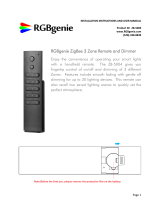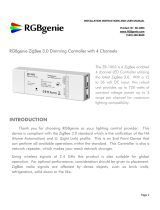
iv digi.com
xbee_ser_close .......................................................................................................................................... 27
xbee_ser_flowcontrol................................................................................................................................ 28
xbee_ser_get_cts ....................................................................................................................................... 29
xbee_ser_getchar....................................................................................................................................... 29
xbee_ser_invalid ....................................................................................................................................... 30
xbee_ser_open........................................................................................................................................... 30
xbee_ser_portname ................................................................................................................................... 31
xbee_ser_putchar ...................................................................................................................................... 31
xbee_ser_read ........................................................................................................................................... 32
xbee_ser_rx_flush..................................................................................................................................... 32
xbee_ser_rx_free....................................................................................................................................... 33
xbee_ser_rx_used...................................................................................................................................... 33
xbee_ser_set_rts........................................................................................................................................ 34
xbee_ser_tx_flush ..................................................................................................................................... 34
xbee_ser_tx_free ....................................................................................................................................... 35
xbee_ser_tx_used...................................................................................................................................... 35
xbee_ser_write .......................................................................................................................................... 36
xbee_dev_dump ........................................................................................................................................ 37
xbee_dev_init............................................................................................................................................ 37
xbee_dev_reset.......................................................................................................................................... 38
xbee_dev_tick ........................................................................................................................................... 38
xbee_frame_dump_modem_status ........................................................................................................... 39
xbee_frame_write ..................................................................................................................................... 40
xbee_cmd_clear_flags............................................................................................................................... 41
xbee_cmd_create...................................................................................................................................... 41
xbee_cmd_execute.................................................................................................................................... 42
xbee_cmd_init_device .............................................................................................................................. 43
xbee_cmd_list_execute............................................................................................................................. 43
xbee_command_list_status ....................................................................................................................... 44
xbee_cmd_query_device........................................................................................................................... 45
xbee_cmd_query_status............................................................................................................................ 46
xbee_cmd_release_handle ........................................................................................................................ 46
xbee_cmd_send......................................................................................................................................... 47
xbee_cmd_set_callback ............................................................................................................................ 47
xbee_cmd_set_command.......................................................................................................................... 48
xbee_cmd_set_flags.................................................................................................................................. 49
xbee_cmd_set_param................................................................................................................................ 49
xbee_cmd_set_param_bytes ..................................................................................................................... 50
xbee_cmd_set_param_str.......................................................................................................................... 51
xbee_cmd_set_target................................................................................................................................. 51
xbee_cmd_simple ..................................................................................................................................... 52
xbee_cmd_tick .......................................................................................................................................... 53
xbee_identify ............................................................................................................................................ 53
xbee_disc_device_type_str ....................................................................................................................... 54
xbee_disc_nd_parse .................................................................................................................................. 54
xbee_disc_node_id_dump ........................................................................................................................ 55
xbee_fw_buffer_init............................................................................................................
...................... 55
xbee_fw_install_ebl_tick
.......................................................................................................................... 56
xbee_fw_install_init.................................................................................................................................. 56
xbee_fw_install_oem_tick ........................................................................................................................ 58
xbee_fw_status_ebl................................................................................................................................... 58
xbee_fw_status_oem................................................................................................................................. 59
wpan_cluster_match ................................................................................................................................. 61
wpan_endpoint_get_next .......................................................................................................................... 62






















